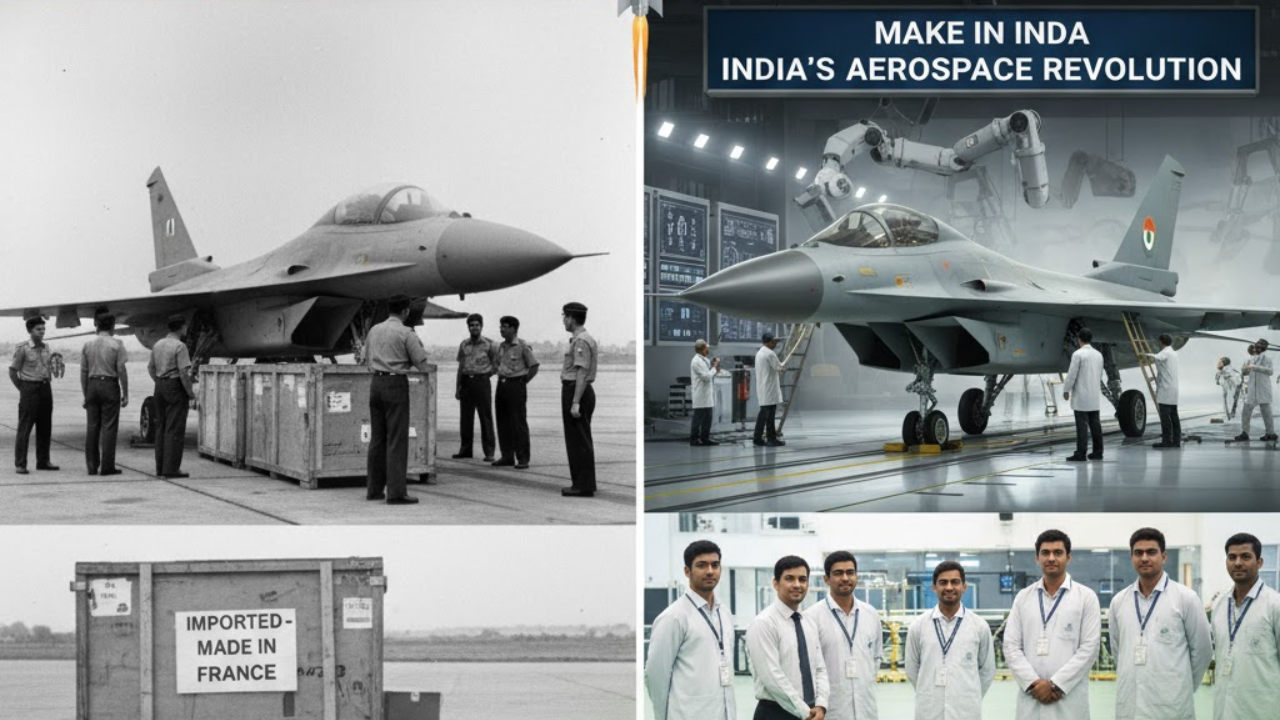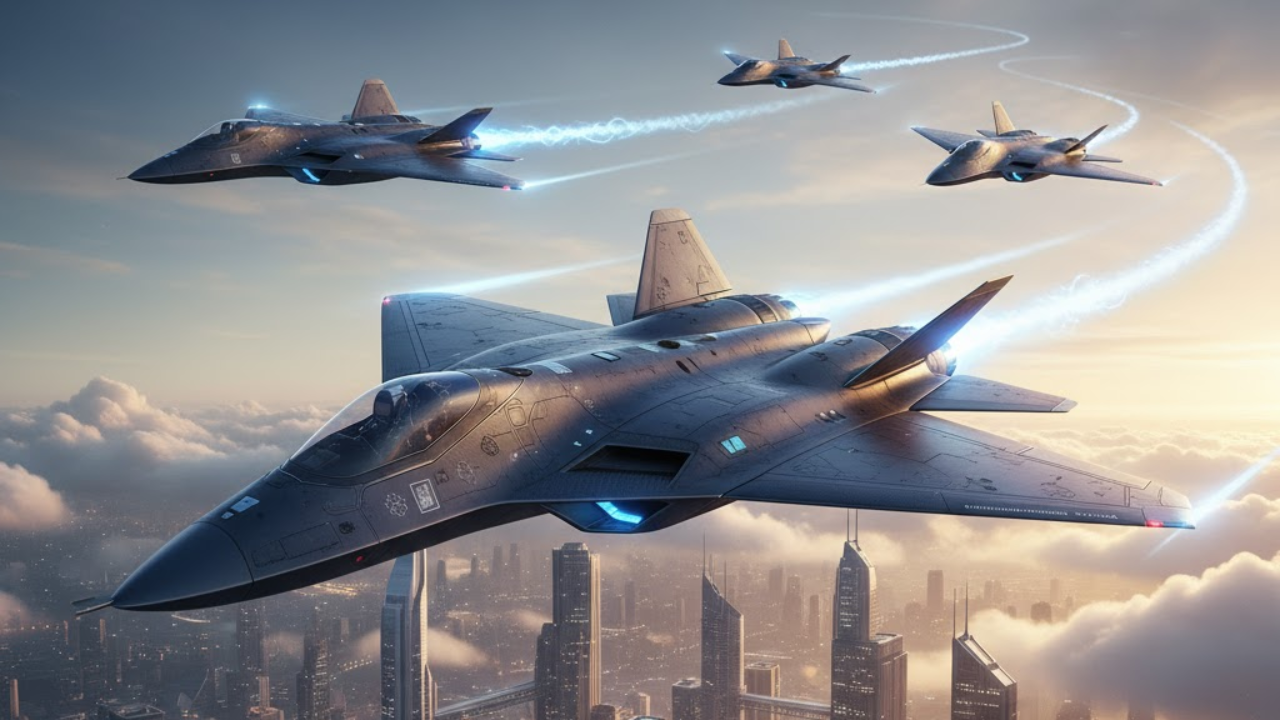
Post by : Meena Rani
Not long ago, India’s skies were dominated by foreign-built aircraft, its defense fleet imported, and its aviation parts largely sourced from overseas. But in 2025, the winds have shifted dramatically. India is no longer content to merely purchase planes—it wants to build them, design them, and export them. What was once a dream of self-reliance is fast becoming a blueprint for industrial transformation.
The country’s aerospace ambitions, long nurtured through slogans like Make in India and Atmanirbhar Bharat, have matured into tangible projects involving some of the world’s biggest aviation players. The collaboration between Reliance Infrastructure and Dassault Aviation to manufacture Falcon 2000 business jets on Indian soil, and Safran’s decision to double its workforce and sourcing from India, symbolize the scale of this transformation. These partnerships are not mere outsourcing ventures—they represent India’s coming-of-age in global aerospace manufacturing.
In the central Indian city of Nagpur, a sleek new assembly line is being built that will soon roll out one of the world’s most sophisticated business jets—the Dassault Falcon 2000. It’s a project that captures everything India’s industrial policy has been working toward: foreign collaboration, local manufacturing, and global competitiveness. The first aircraft, expected to take flight by 2028, will carry not just passengers but a powerful message—the message that India can build world-class planes, not just fly them.
This partnership isn’t an isolated event. It’s part of a broader industrial awakening. French engine manufacturer Safran is setting up new plants and expanding its MRO (maintenance, repair, and overhaul) facilities in Hyderabad and Bengaluru. Its engineers are training Indian technicians, developing local suppliers, and sourcing components directly from Indian firms. Within a few years, India could be maintaining and manufacturing aircraft engines for fleets flying across Asia.
What makes this moment remarkable is the confidence behind it. India’s aerospace growth isn’t driven solely by defense spending—it’s powered by engineering excellence and entrepreneurship. Private firms, startups, and traditional giants like Hindustan Aeronautics Limited and Tata Advanced Systems are collectively building a vibrant ecosystem that’s catching the attention of the world.
Today, components made in India are already flying in Airbus A320s and Boeing 787s. Tomorrow, entire aircraft could bear the “Made in India” mark. The government’s Production Linked Incentive (PLI) schemes and easier FDI rules have catalyzed this momentum, encouraging foreign OEMs to establish design and manufacturing bases here rather than just assembly units.
The aerospace boom is reshaping more than just the skies—it’s rewriting local economies. Thousands of skilled jobs are being created, from precision machinists in Tamil Nadu to avionics engineers in Karnataka. Educational institutions are introducing specialized aerospace programs, while small manufacturers across Pune, Nashik, and Hyderabad are evolving into certified suppliers for global aerospace giants.
Perhaps the most profound impact, however, is cultural. For decades, India’s engineers designed for others—coding for foreign software companies, fabricating parts to others’ blueprints. Now, they are designing for themselves, innovating for their own nation, and competing at the same table as France, the U.S., and Japan.
In a world where supply chains are being rethought after years of dependence on single sources, India’s rise offers both reliability and scale. The country’s strategic location—bridging the East and the West—makes it ideal for servicing both commercial and defense clients. Major aerospace firms now view India as an anchor partner, not just a low-cost vendor.
By 2035, analysts expect India’s aerospace exports to touch $15 billion annually, with a significant share coming from civil aviation manufacturing and defense exports. As India’s domestic airline market continues to expand—already the world’s third-largest—the synergy between commercial and defense aviation will create a powerful multiplier effect for the economy.
Of course, the climb won’t be without turbulence. The industry still faces challenges—complex regulations, limited R&D investment, and a need for more global certifications among local suppliers. But momentum is on India’s side. With international trust growing, technology transfer increasing, and domestic demand soaring, the country’s aerospace ambitions have finally found their wings.
India’s journey from being a buyer of aircraft to a builder of aviation ecosystems reflects not just industrial progress but a national redefinition. Every rivet tightened in a Nagpur hangar, every turbine blade crafted in Bengaluru, and every avionics chip designed in Pune tells the same story: India’s aerospace era has begun.
Disclaimer:
This article is for informational and educational purposes only. Developments in the aerospace industry evolve rapidly; readers should verify the latest updates through official and credible sources before drawing conclusions.
aerospace manufacturing, India aviation, make in India, Reliance Dassault, Safran India, defense industry, aerospace exports, Indian manufacturing










Bengaluru-Mumbai Superfast Train Approved After 30-Year Wait
Railways approves new superfast train connecting Bengaluru and Mumbai, ending a 30-year demand, easi

Canada Post Workers Strike Halts Nationwide Mail and Parcel Services
Canada Post halts operations as CUPW strike disrupts mail and parcel delivery nationwide amid disput

PM Modi Launches BSNL ‘Swadeshi’ 4G Network, 97,500 Towers Built
India enters global telecom league as PM Modi inaugurates BSNL’s indigenous 4G, connecting 26,700 vi

India’s Iconic MiG‑21 Takes Final Flight After Six Decades of Service
After 60 years India retires its MiG‑21 fighter jet, a legendary yet controversial warplane marking

Hindustan Zinc unveils AI hotspot monitoring at Debari smelter
Hindustan Zinc launches AI-powered Switchyard Hotspot Monitoring at Debari smelter to cut outages bo

Chinese experts worked inside sanctioned Russian drone plant
Chinese drone specialists visited IEMZ Kupol supplying parts and drones via intermediaries, deepenin